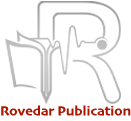Public trust in the scientific process and the credibility of published articles depend in part on how transparently conflicts of interest are handled during the planning, implementation, writing, peer review, editing, and publication of scientific work. Financial relationships (such as employment, consultancies, stock ownership or options, honoraria, patents, and paid expert testimony) are the most easily identifiable conflicts of interest and the most likely to undermine the credibility of the journal, the authors, and of science itself. However, conflicts can occur for other reasons, such as personal relationships or rivalries, academic competition, and intellectual beliefs. All authors should comply with the journals’ policies on conflict of interest. All participants in the peer-review and publication process, not only authors but also peer reviewers, editors, and editorial board members of journals must consider their conflicts of interest when fulfilling their roles in the process of article review and publication and must disclose all relationships that could be viewed as potential conflicts of interest.
When authors submit a manuscript of any type or format they are responsible for disclosing all financial and personal relationships that might bias or be seen to bias their work by signing conflicts of interest disclosure form.
